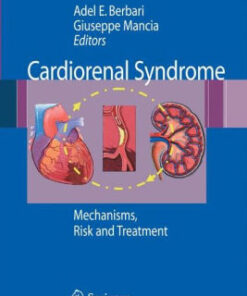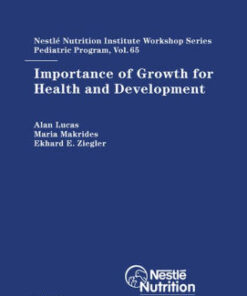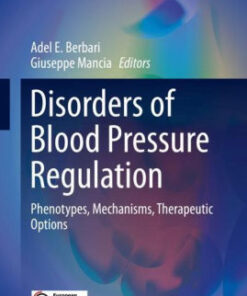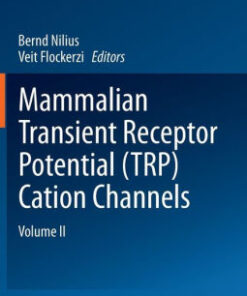(PDF) Anatomy and Physiology for Speech, Language 6th Ed by Seikel
$38.00
Download instantly Anatomy and Physiology for Speech, Language, and Hearing 6th Edition J. Anthony Seikel, David G. Drumright, Daniel J. Hudock. It is ebook in PDF format.
ISBN-10: 1635502799 ISBN-13: 9781635502794
Preview
This is the PDF eBook version for Anatomy and Physiology for Speech, Language, and Hearing 6th Edition J. Anthony Seikel, David G. Drumright, Daniel J. Hudock
Table of Contents
Preface
About the Authors
About the Contributor
Acknowledgements
Introduction to Learner
Using this Text
Chapter 1. Basic Elements of Anatomy
Anatomy and Physiology
Terminology of Anatomy
Terminology of Anatomy
Terms of Movement
Parts of the Body
Building Blocks of Anatomy: Tissues and Systems
Tissues
Body Systems
Chapter Summary
Chapter 1 Study Questions
Chapter 1 Study Question Answers
Bibliography
Chapter 2. Anatomy of Respiration
The Support Structure of Respiration
Overview
Vertebral Column
Pelvic and Pectoral Girdles
Ribs and Rib Cage
Soft Tissue of the Thorax and Respiratory Passageway
Movement of Air Through the System
Muscles of Inspiration
Muscles of Forced Expiration
Chapter Summary
Chapter 2 Study Questions
Chapter 2 Study Question Answers
Bibliography
Chapter 3. Physiology of Respiration
The Measurement of Respiration
Instruments in Respiration
Respiration for Life
Effects of Turbulence on Respiration
Respiratory Cycle
Developmental Processes in Respiration
Volumes and Capacities
Volumes
Capacities
Pressures of the Respiratory System
Pressures Generated by the Tissue
Effects of Posture on Speech
Pressures and Volumes of Speech
Respiratory Pathologies Affecting Communication
Chronic Conditions
Chapter Summary
Chapter 3 Study Questions
Chapter 3 Study Question Answers
Bibliography
Chapter 4. Anatomy of Phonation
A Tour of the Phonatory Mechanism
Framework of the Larynx
Cavities of the Larynx
Structure of the Larynx
Laryngeal Musculature
Intrinsic Laryngeal Muscles
Laryngeal Elevators and Depressors
Chapter Summary
Chapter 4 Study Questions
Chapter 4 Study Question Answers
Bibliography
Chapter 5. Physiology of Phonation
Non-Speech Laryngeal Function
Laryngeal Function For Speech
A Brief Discussion of Acoustics
Instruments for Voicing
The Bernoulli Effect
Vocal Attack
Termination
Sustained Phonation
Vocal Register
Frequency, Pitch, and Pitch Change
Pitch-Changing Mechanism
Intensity and Intensity Change
Clinical Considerations
Linguistic Aspects of Pitch and Intensity
Theories of Phonation
Pathologies That May Affect Phonation
Structural Etiologies
Degenerative Neurological Diseases
Chapter Summary
Decibel Practice Activity
Chapter 5 Study Questions
Chapter 5 Study Question Answers
Bibliography
Chapter 6. Anatomy of Articulation and Resonation
Source-Filter Theory of Vowel Production
The Articulators
Bones of the Face and Cranial Skeleton
Bones of the Face
Bones of the Cranial Skeleton
Dentition
Dental Development
Dental Occlusion
Cavities of the Vocal Tract
Muscles of the Face and Mouth
Muscles of the Face
Muscles of the Mouth
Muscles of Mastication: Mandibular Elevators and Depressors
Muscles of the Velum
Muscles of the Pharynx
Chapter Summary
Chapter 6 Study Questions
Chapter 6 Study Question Answers
Bibliography
Chapter 7. Physiology of Articulation and Resonation
Instrumentation in Articulation
Speech Function
Lips
Mandible
Tongue
Velum
Development of Articulatory Ability
Development of the Vocal Tract
Coordinated Articulation
Central Control Theory
Dynamic or Action Theory Models
The DIVA Model of Speech Production
Pathologies That May Affect Articulation
Problems Affecting Dentition
Problems Affecting the Tongue
Mandibular and Maxillary Problems
Problems Affecting Lips and Palate
Neurogenic Conditions Affecting Speech
Chapter Summary
Chapter 7 Study Questions
Chapter 7 Study Question Answers
Bibliography
Chapter 8. Physiology of Mastication and Deglutition
Mastication and Deglutition
Instrumentation in Swallowing Function
Anatomical and Physiological Developmental Issues
Organizational Patterns of Mastication and Deglutition
Oral Stage: Oral Preparation
Oral Stage: Transport
Pharyngeal Stage
Esophageal Stage
Process Model of Mastication and Deglutition
Neurophysiological Underpinnings of Mastication and Deglutition
Sensation Associated with Mastication and Deglutition
Salivation Response
Reflexive Circuits of Mastication and Deglutition
Chewing Reflex
Orienting, Rooting, and Suckling/Sucking Reflexes
Uvular (Palatal) Reflex
Gag (Pharyngeal) Reflex
Retch and Vomit Reflex
Cough Reflex
Pain Withdrawal Reflex
Apneic Reflex
Respiration Reflexes
Swallowing Reflex
Reexamination of the Patterns for Mastication and Deglutition: A Complex Integration of Reflexes and Voluntary Action
Pathologies Affecting Swallowing Function
Chapter Summary
Chapter 8 Study Questions
Chapter 8 Study Question Answers
Bibliography
Chapter 9. Anatomy of Hearing
The Structures of Hearing
Outer Ear
Middle Ear
Structure of the Tympanic Membrane
Landmarks of the Middle Ear
Inner Ear
Osseous Vestibule
Osseous Semicircular Canals
Osseous Cochlear Labyrinth
Innervation Pattern of the Organ of Corti
Chapter Summary
Chapter 9 Study Questions
Chapter 9 Study Question Answers
Bibliography
Chapter 10. Auditory Physiology
Instrumentation in Hearing Research
Outer Ear
Middle Ear Function
Inner Ear Function
Vestibular Mechanism
Auditory Mechanism: Mechanical Events
Electrical Events
Resting Potentials
Potentials Arising from Stimulation
Neural Responses
Post-Stimulus Time Histograms
Interspike Interval and Period Histograms
Frequency Selectivity
Auditory Pathway Responses
Pathologies That May Affect Audition
Inflammatory Conditions
Congenital Problems
Traumatic Lesions
Neoplastic Changes
Semicircular Canal Dehiscence
Chapter Summary
Media Connection
Chapter 10 Study Questions
Chapter 10 Study Question Answers
Bibliography
Chapter 11. Neuroanatomy
Overview
Divisions of the Nervous System
Central Nervous System and Peripheral Nervous System
Autonomic and Somatic Nervous Systems
Development Divisions
Anatomy of the CNS and PNS
Neurons
Anatomy of the Cerebrum
Medial Surface of Cerebral Cortex
Inferior Surface of Cerebral Cortex
Myelinated Fibers
Anatomy of the Subcortex
Cerebrovascular System
Cerebellum
Anatomy of the Brainstem
Superficial Brainstem Landmarks
Deep Structure of the Brainstem
Cranial Nerves
Cranial Nerve Classification
Specific Cranial Nerves
Anatomy of the Spinal Cord
Chapter Summary
Chapter 11 Study Questions
Chapter 11 Study Question Answers
Bibliography
Chapter 12. Neurophysiology
Instrumentation in Neurophysiology
The Neuron
Neuron Function
Muscle Function
Higher Functioning
Motor System Lesions
Afferent Inputs
Association Regions
Hemispheric Specialization
Lesion Studies
Motor Control for Speech
Neurogenic Conditions That May Affect Communication
Acquired Conditions
Degenerative Diseases
Chapter Summary
Chapter 12 Study Questions
Chapter 12 Study Question Answers
Bibliography
Appendix A. Anatomical Terms
Appendix B. Useful Combining Forms
Appendix C. Muscles of Respiration
Thoracic Muscles of Inspiration
Abdominal Muscles of Expiration
Muscles of Upper Limb
Appendix D. Muscles of Phonation
Intrinsic Laryngeal Muscles
Extrinsic Laryngeal, Infrahyoid, and Suprahyoid Muscles
Appendix E. Muscles of Face, Soft Palate, and Pharynx
Muscles of the Face
Muscles of the Pharynx
Appendix F. Sensors
General Classes
Specific Types
Classes of Sensation
Appendix G. Cranial Nerves
Classes of Cranial Nerves
Cranial Nerves, Sources, and Functions
Glossary
Index




